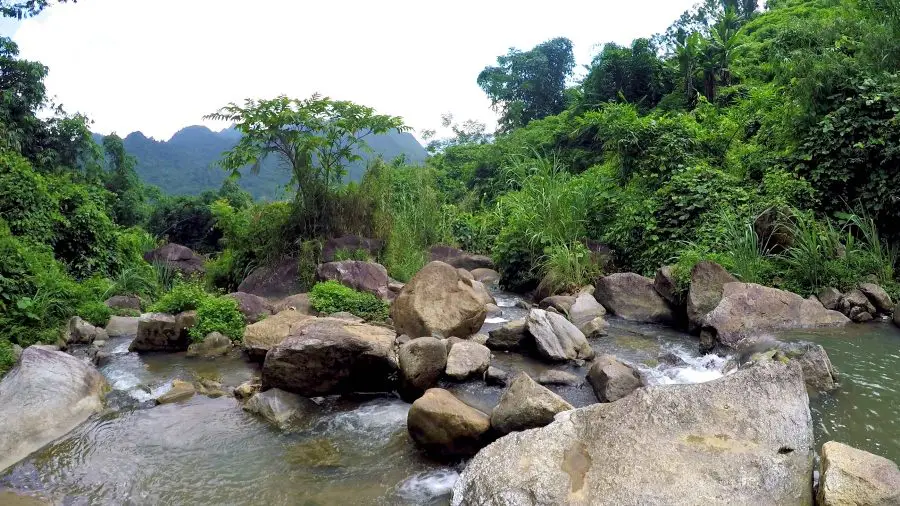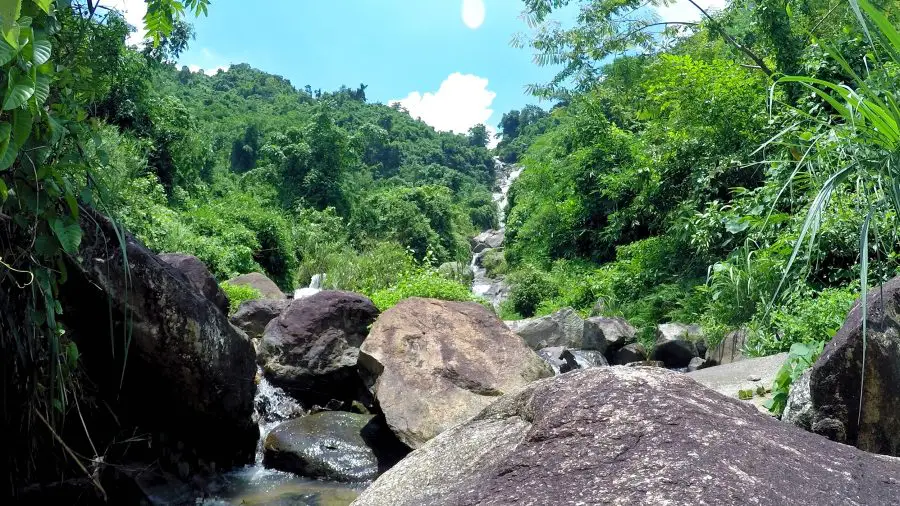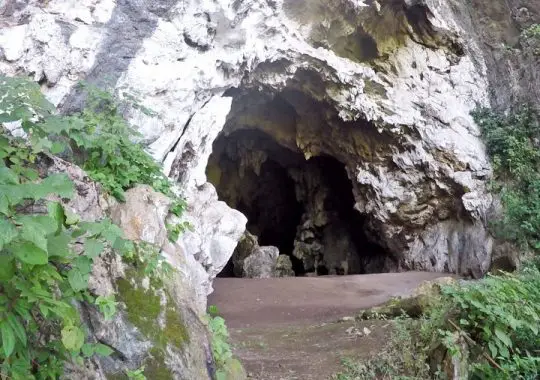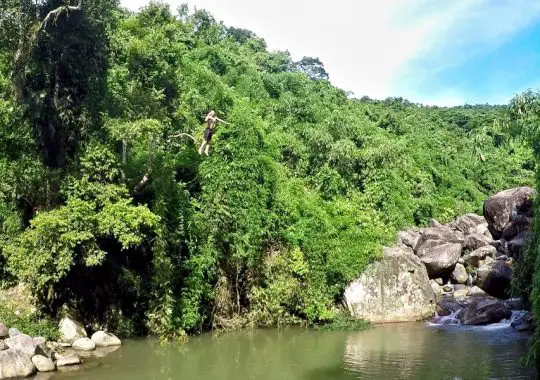Tat Ma Waterfall, Ba Be Lake – Thác Tát Mạ
The splendid Tat Ma Waterfall is set in the mountains of Ba Be district of Bac Kan province and is around 240 km from Hanoi. It’s a really big waterfall that can be seen from quite a long distance as you reach the valley it cascades into. It is surrounded by lush green vegetation and has clean, clear and pure water that is lovely to bathe in.


There is a pathway along the side and crossing the falls, some of the stairs receive constant water flow and can be a bit slippery. Alternatively, you can rock hop your way directly up against the current – this requires a lot of energy and climbing but there are plenty of small pools to rest in along the way.
The falls are still not on the tourist radar which means there is no rubbish strewn all over the place and it maintains its natural beauty. However, this also means there are no stalls or shops to buy drinks or refreshments at the falls. There are however some small stores just over a kilometer back from the parking area where you can pick up basic snacks and drinks. You can pack a picnic and even light a small campfire here to cook, just be sure to take your rubbish with you when you leave.

The meaning of Thac Tat Ma’s name
Thác means waterfall in Vietnamese while Tát translates roughly as slapping. Mạ means horse in an older dialect – the direct translation is Slapping Horse Waterfall. This name (among others) was given to the cascade by the local Tay ethnic people. In the past, people said this waterfall sounded like the thunderous roar of a herd of galloping horses. This makes a lot of sense, more so in the drenching wet season. It would no doubt of been heard from much further afar in times gone by before mobile phones and karaoke were invented.


Another name we came across was Silver Waterfall which is also logical as its silver stream of water cutting through the green jungle really stands out from afar in the area.

The Tay Ethnic Minority
The Tày people mainly reside in the mountainous far north of Vietnam and are one of the largest ethnic groups in the country. Typically, Tay villages are located at the base of mountains, alongside streams and water. They are an agricultural folk whose lives revolve around the land and nature. Their traditional clothing is handmade from cotton and is often dyed indigo. It is not heavily embroidered like most other minority groups in Vietnam.


They have their own indigenous religion that worships gods of nature as well as ancestors, especially those renowned in history. Vietnamese Buddhism has also become quite influential in recent history.
The Tay have their own unique language that sadly, is slowly disappearing – not many people are well versed in it in modern times. Like many minorities, Tay children study the national language of their home country – Vietnamese. This of course is completely logical and brings both social and economical benefits to the Tay people.


Places to Visit nearby Tat Ma Waterfall
About 2 kilometres away there is the Hua Ma cave next to the Lè River. It is is roughly 700 metres deep and at points has a 40-50 metre ceiling. It’s surrounded by the interestingly named “Ghost Forest” or “Leo Pen”. It is a 300m uphill climb to reach the cave’s entrance. Động Hua Mạ is also relatively unknown to tourists and was only properly surveyed in 2003.
Once in the area you are almost certainly going to be visiting Ba Be National Park which is home to Vietnam’s largest natural lake. Pac Ngoi Village on the lake’s edge is only a mere 8 kilometres away. It’s a great place to explore by boat on some of the cleanest water Vietnam has to offer.
If you are really into waterfalls head around 220 kilometres northwest to Ban Gioc. Here you will find Vietnam’s largest and most famous waterfall smack bang on the Chinese border in Cao Bang Province.
For those on 2 wheels the surrounding Bac Kan area is absolutely beautiful and is loaded with small back roads – It’s perfect for motorbike touring with plenty of off road to explore.




